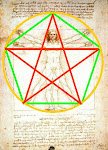http://news.bbc.co.uk/2/hi/europe/4923342.stm
Wildlife defies Chernobyl radiation
It contains some of the most contaminated land in the world, yet it has become a haven for wildlife - a nature reserve in all but name.

The exclusion zone around the Chernobyl nuclear power station is teeming with life.
As humans were evacuated from the area 20 years ago, animals moved in. Existing populations multiplied and species not seen for decades, such as the lynx and eagle owl, began to return.
There are even tantalising footprints of a bear, an animal that has not trodden this part of Ukraine for centuries.
"Animals don't seem to sense radiation and will occupy an area regardless of the radiation condition," says radioecologist Sergey Gaschak.
"A lot of birds are nesting inside the sarcophagus," he adds, referring to the steel and concrete shield erected over the reactor that exploded in 1986.
"Starlings, pigeons, swallows, redstart - I saw nests, and I found eggs."
There may be plutonium in the zone, but there is no herbicide or pesticide, no industry, no traffic, and marshlands are no longer being drained.
There is nothing to disturb the wild boar - said to have multiplied eightfold between 1986 and 1988 - except its similarly resurgent predator, the wolf.
Inedible
The picture was not quite so rosy in the first weeks and months after of the disaster, when radiation levels were much, much higher.
Four square kilometres of pine forest in the immediate vicinity of the reactor went ginger brown and died, earning the name of the Red Forest. 
Some animals in the worst-hit areas also died or stopped reproducing. Mice embryos simply dissolved, while horses left on an island 6km from the power plant died when their thyroid glands disintegrated.
Cattle on the same island were stunted due to thyroid damage, but the next generation were found to be surprisingly normal.
Now it's typical for animals to be radioactive - too radioactive for humans to eat safely - but otherwise healthy.
Adaptation
There is a distinction to be made between animals which stay in one place, such as mice, and larger animals - elks, say - which move in and out of contaminated land as they range over large areas.
The animals that wander widely end up with a lower dose of radiation than animals stuck in a radiation hotspot.
But there are signs that these unfortunate creatures can adapt to their circumstances. 
Sergey Gaschak has experimented on mice in the Red Forest, parts of which are slowly growing back, albeit with stunted and misshapen trees.
"We marked animals then recaptured them again much later," he says.
"And we found they lived as long as animals in relatively clean areas."
The next step was to take these other mice and put them in an enclosure in the Red Forest.
"They felt not very well," Sergey says.
"The distinction between the local and newcomer animals was very evident."
Mutation
In all his research, Sergey has only found one mouse with cancer-like symptoms.
![]()
He has found ample evidence of DNA mutations, but nothing that affected the animals' physiology or reproductive ability.
"Nothing with two heads," he says.
Mary Mycio, author of Wormwood Forest, a natural history of the Chernobyl zone, points out that a mutant animal in the wild will usually die and be eaten before scientists can observe it.
And in general, she notes, scientists study populations as a whole, and are not that interested in what happens to particular individuals.
Nuclear guardian
But she too argues that the benefits to wildlife of removing people from the zone, have far outweighed any harm from radiation.
In her book she quotes the British scientist and environmentalist James Lovelock, who wrote approvingly in the Daily Telegraph in 2001 of the "unscheduled appearance" of wildlife at Chernobyl. 
He went on: "I have wondered if the small volumes of nuclear waste from power production should be stored in tropical forests and other habitats in need of a reliable guardian against their destruction by greedy developers".
A large part of the Chernobyl zone within Belarus has already officially been turned into a nature reserve.
Sergey Gaschak wants Ukraine to follow suit and to turn its 2,500 sq km of evacuated land into a reserve or national park.
Unlike the Ukrainian Green Party, he is not bothered if the government goes ahead with plans to build a deep deposit in the zone for nuclear waste from all over the country.
He says the eagle owl will not care two hoots.
